The Optimus ‘Polaris Optifuel’ is a new multi-fuel stove that can burn all liquid fuel types and butane/propane canisters through a single jet.
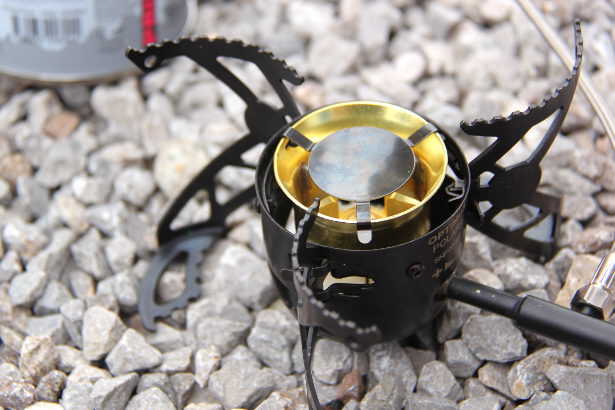
[divide]
Quick Review
[one_half]
Pros
Burns all types of fuel
Don’t ever need to change nozzles/jets
Good build quality
[/one_half]
[one_half_last]
Cons
Expensive
Bit heavier than some
[/one_half_last]
You should buy this stove if…
You anticipate using lots of different fuels or like the idea that you could and/or you want a good quality stove and can afford it.
You shouldn’t buy this stove if…
You just want to use one type of fuel (e.g. white fuel in the cold, unleaded petrol/gas whilst travelling or butane/propane canisters for ease) or price is a factor.
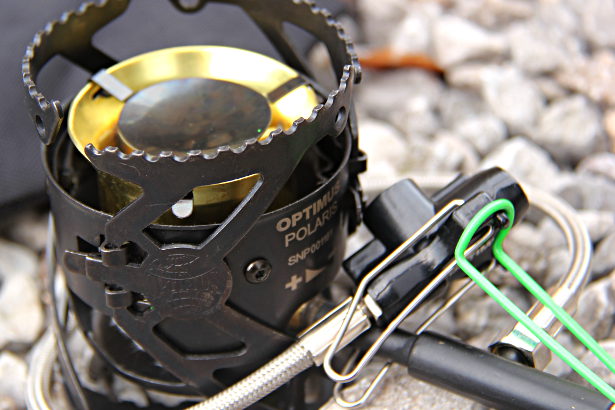
[divide]
Introduction
Multi-fuel stoves are so-called because they allow you to burn a variety of different fuel types such as petrol, white fuel, diesel and kerosene. Some newer stoves can also use butane/propane canisters.
However, with the exception of the Primus OmniFuel/OmniLite and Trangia X2, most stoves aren’t compatible with all the different types of fuel; they just burn a couple of types.
Similarly, most such stoves require you to manually remove and replace a small brass nozzle (sometimes called a ‘jet’) every time you switch the type of fuel you’re using.
What makes Optimus’s Polaris Optifuel unique amongst the ~28 different multi-fuel stoves on the market is that it both burns all the available fuel types and does so through a single jet. In other words, you can use whatever fuel you like – diesel, gas, petrol, kerosene – and you never need to change the nozzle.
[UPDATE OCTOBER 2015: I’ve since discovered that the Edelrid Hexon Multifuel stove also burns all fuels through a single nozzle. That doesn’t detract from the Polaris in any way but does mean it has some competition. Big thanks to Gabor for point this out to me!]
(Disclosure: Optimus are owned by Katadyn who loaned me the stove to review. Katadyn products are imported to the UK by Lyon Equipment who gave me sponsored kit for my recent cycle around the world).
[divide]
The Review
First impressions: look and feel
The Polaris looks and feels like a quality piece of kit. It looks good, feels robust and the curved legs provide a reassuringly stable platform for pans. The fuel valve at the base of the stove is the only part that feels a bit flimsy but that’s presumably because they’ve made it huge (a good thing for easy operation) and thus have saved weight by using a thin piece of wire.
Included in the box
- Stove – sleak looking black unit with fold away curved legs.
- Pump – pretty standard, big solid fuel valve.
- Bottle – same as the rest except with a safety lid (you have to push and twist to release).
- Stove tool – it looks like a tiny medieval mace but has the wonderful feature of a magnet inside. If you wave it underneath the stove then it pulls a small needle through the nozzle to clean it. It’s a feature unique to Optimus stoves and allows you to unblock the jet even when cooking. (MSR stoves have a similar self-cleaning system in which you just shake the stove).
- Canister legs – a last feature of the Optifuel is that the end of the fuel hose has two unfolding wire legs. When you’re using butane/propane canisters, this allows you to tip the canister upside down which makes it burn better in cold temperatures. It’s a neat trick that more manufacturers are starting to cotton on to (and is dramatically called ‘four season mode’).
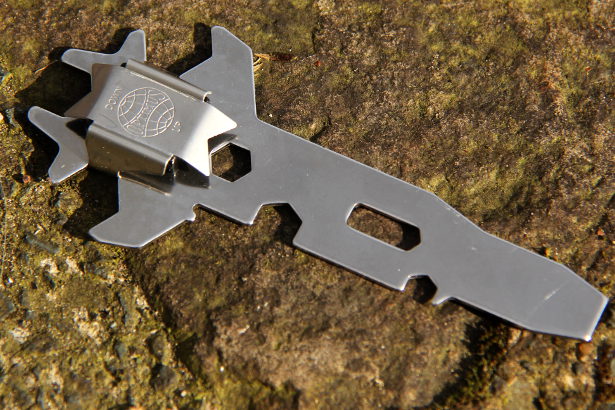
Operation
The Polaris functions like most other multi-fuel stoves. Priming and lighting was straightforward with liquid fuel and it burned cleanly using a gas canister.
Fuels burned
I’ve said that the Optimus Polaris burns “all” fuels. What I really mean is all four types of liquid fuel that such stoves ever burn – specifically white fuel, unleaded petrol/gas, kerosene and diesel – as well as butane/propane canisters. This is not unique but it is rare.
(If you’re not quite sure about all the different types of fuel then I’ve written a Guide to Different Fuel Types).
MSR’s XGK-EX, DragonFly and Whisperlite International can’t take canisters and even the boldly named ‘Universal’ can’t take diesel. The same goes for the tiny Edelrid Hexon.
The only stoves that match the Polaris are the Primus Omnifuel and OmniLite Ti, and a Trangia with the X2 Multifuel Burner kit (which can technically use alcohol/methylated spirits as well). However, these all require changing nozzles when you change fuel types. [UPDATE: the Edelrid Hexon can also burn all fuel types].
Ease of use – nozzles, simmering and priming
The Polaris can simmer and only requires one nozzle (i.e. doesn’t need changing for different fuel types). It does, however, need priming.
Other stoves that simmer include:
- Primus Omnifuel/OmniLite
- MSR DragonFly
- Trangia X2 Multi Fuel
- Optimus Nova and Nova+
Other stoves with only one nozzle:
- MSR WhisperLite
- Kovea’s Booster Dual Max, Booster+1 and Hydra
- Edelrid’s Hexon Multifuel
- Soto’s Muka
- Optimus Nova and Nova+
The only other stoves that can both simmer and don’t reqire nozzle changes are made by Optimus: the Nova and Nova Plus.
The one area where the Polaris can be beaten for ease is priming. The Muka stove from Soto has a clever built-in priming system to save you faffing around pre-heating the stove. I’ll be reviewing the Muka next week.
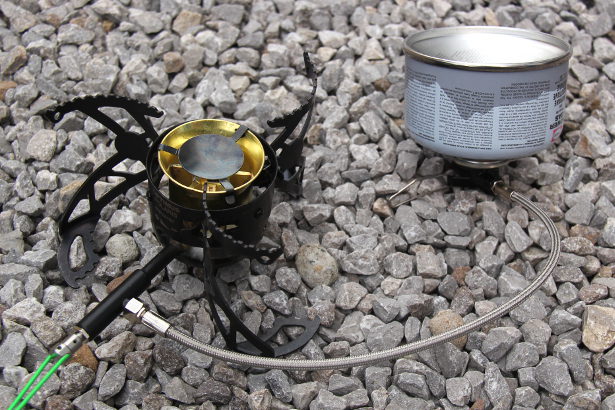
Weight
At 475g (17oz), the Polaris is on the heavier side for a liquid fuel stove though by no means the heaviest:
- Edelrid Hexon MultiFuel – 220g (8oz)
- Kovea Hyrda – 310g (11oz)
- Soto Muka – 333g (12oz)
- Primus Omnilite – 340g (12oz)
- Primus Omnifuel – 441g (16oz)
- MSR Whisperlite International – 441g (16oz)
- Optimus Polaris Optifuel – 475g (17oz)
- MSR XGK Expdition – 489g (17oz)
- MSR Dragonfly – 510g (18oz)
- MSR Whisperlite Universal – 549g (19oz)
Price
The Polaris is an expensive stove. It’s not helped by the fact that it’s new to the market which means there’s not much competition and it’s only being sold at or close to RRP. As such, it is currently more expensive than any other multi fuel stove.
- Coleman Sportster II – £58 / $71
- MSR WhisperLite International – £76 / $100
- Kovea Booster+1 – £96 / $153
- MSR Dragonfly – £111 / $140
- Primus Omnifuel – £133 / $145
- MSR XGK EX – £140 / $160
- Primus OmniLite Ti – £157 / $179
- Optimus Polaris Optifuel – £170 / $180 (though currently on ebay from £135)
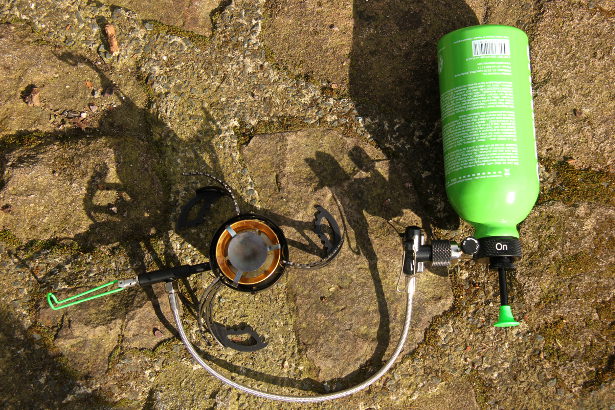
[divide]
Conclusion
For anyone considering buying a multi-fuel stove, the Polaris Optifuel is an all round good stove which will be great if you anticipate using more than one type of fuel or like the idea that you could.
If you’re on a budget or really just looking to burn liquid rather than gas, there are smaller, cheaper and lighter stoves available (take a look at my review to see all your options).
On most measures as a camping stove, the Optimus Polaris is decent – not remarkably better or worse than many others. But its ability to burn all types of fuel through a single jet is novel, unprecedented and excellent.
Changing the nozzles has always been a bit of a pain – reading the tiny print on them, trying to remember which is which, and losing them in the tent/grass/dirt – and could now be a thing of the past.
Optimus have surely thrown down the gauntlett to all other stove manufacturers: why are you still changing jets?
The only comparable innovation in the world of liquid fuel stoves is the Soto Muka’s ability to self-prime. In the meantime, you can see the stats on all 28 different liquid fuel stoves on the market in my Comparison of Multi-Fuel Stoves. Or, if you’d rather stick with gas canisters, see my Comparison of Gas Stoves article instead.
[divide]
Cheapest place to buy one
It’s new so not well stocked online. However, they’re available new on eBay from £135. Keep an eye on AllOutdoor.co.uk too as they’re already stocking Polaris parts and usually the cheapest. In the USA, they’re available on Amazon from $160.
What do you think? Please do add your thoughts below…